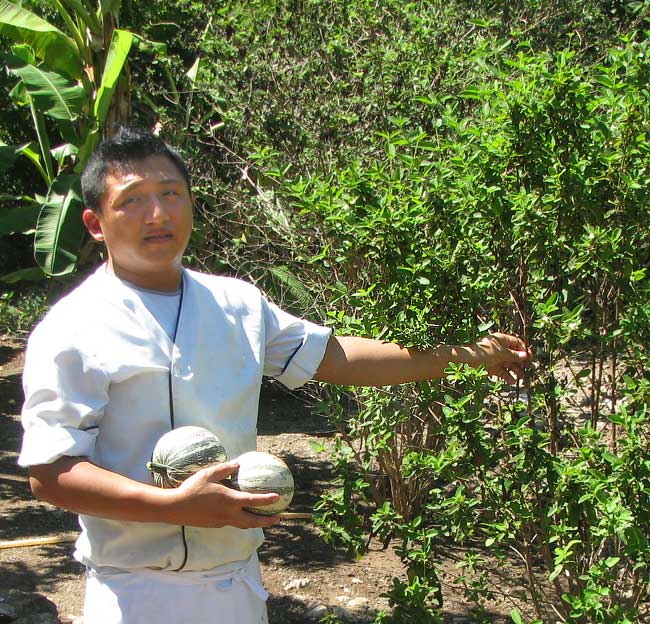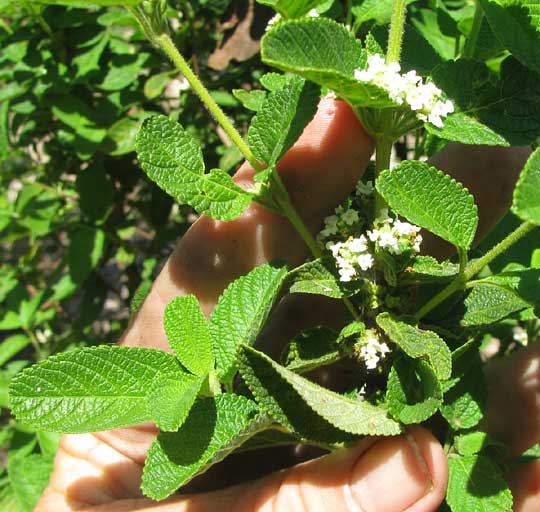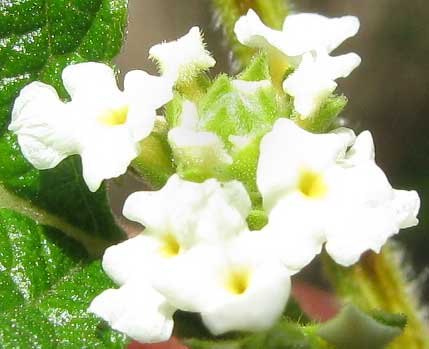Excerpts from Jim Conrad's
Naturalist Newsletter

from the October 17, 2010 Newsletter issued from Hacienda Chichen Resort beside Chichén Itzá Ruins, central Yucatán, MÉXICO; limestone bedrock, elevation ~39m (~128ft), ~N18.52°, ~W95.15°
MEXICAN OREGANO
Visitors to the garden usually regard a rather plain looking, much branched, six-ft-high (1.8m) shrub as one of the most interesting plants there. That's because we call it Orégano, its crushed leaves give off the oregano smell, only stronger, and the leaves are used in the kitchen just as oregano would be used. You can see Edgar of the kitchen staff, recruited as a measuring stick on his way from picking squash for Chef Cime, standing next to the unspectacular bush above.
But, anyone who knows the Oregano plant up North -- often also called Marjoram -- knows that that plant, Origanum vulgare of the Mint Family, only grows a bit over two feet high (60cm). The robust shrub next to Edgar, despite its odor, use and the name we give it, certainly isn't what Northerners call Oregano. So, what is it? You can have a closer look below:

The leaves look minty and are opposite as they are in the Mint Family, but the stems aren't square in cross section. Let's take a closer look at the tiny flowers below:

We saw little dog-faced flowers similar to these just last month on a Lantana. Those flowers are still shown at www.backyardnature.net/n/10/100926lo.jpg.
Last month's Lantana, instead of being a mint like Northern oregano, was a member of the Vervain Family, the Verbenaceae, and so is our Orégano. Our Orégano is LIPPIA GRAVEOLENS, native to the US Southwest, Mexico and Central America as far south as Nicaragua. It's such an important culinary plant that it's also planted outside its area. It goes by numerous English names such as Mexican Oregano, Scented Lippia, Scented Matgrass and Redbrush Lippia.
Its fragrant flowers appear throughout the year, especially after rains.